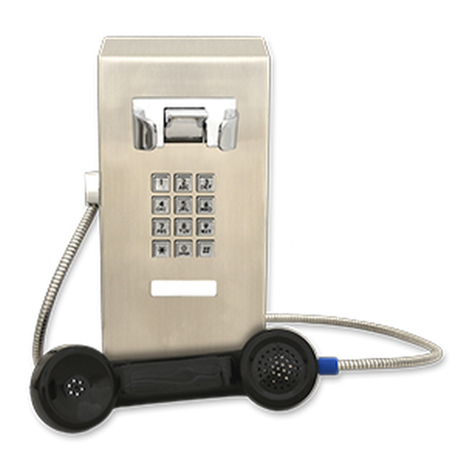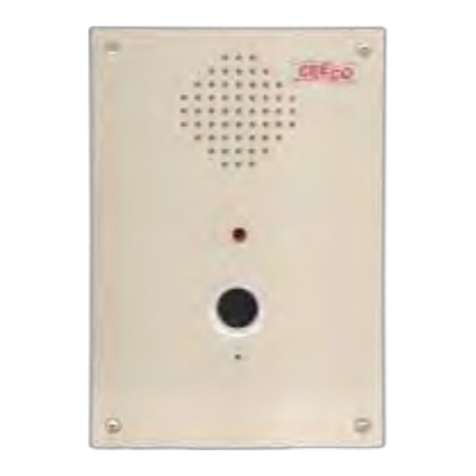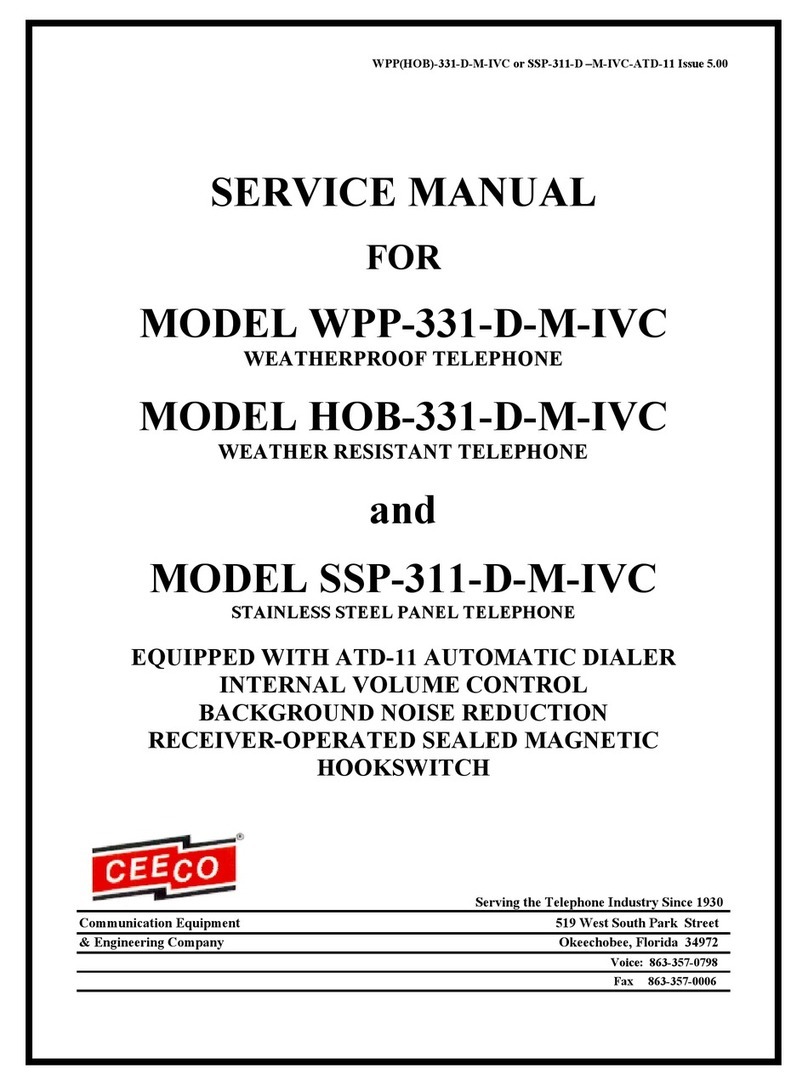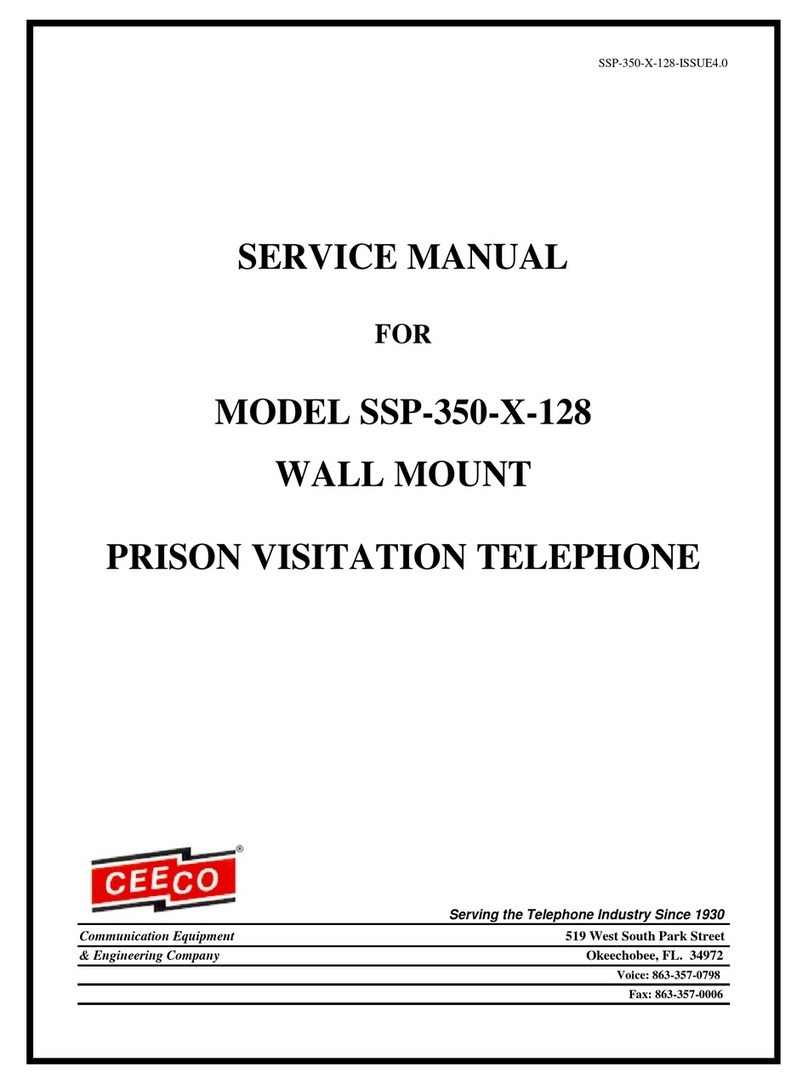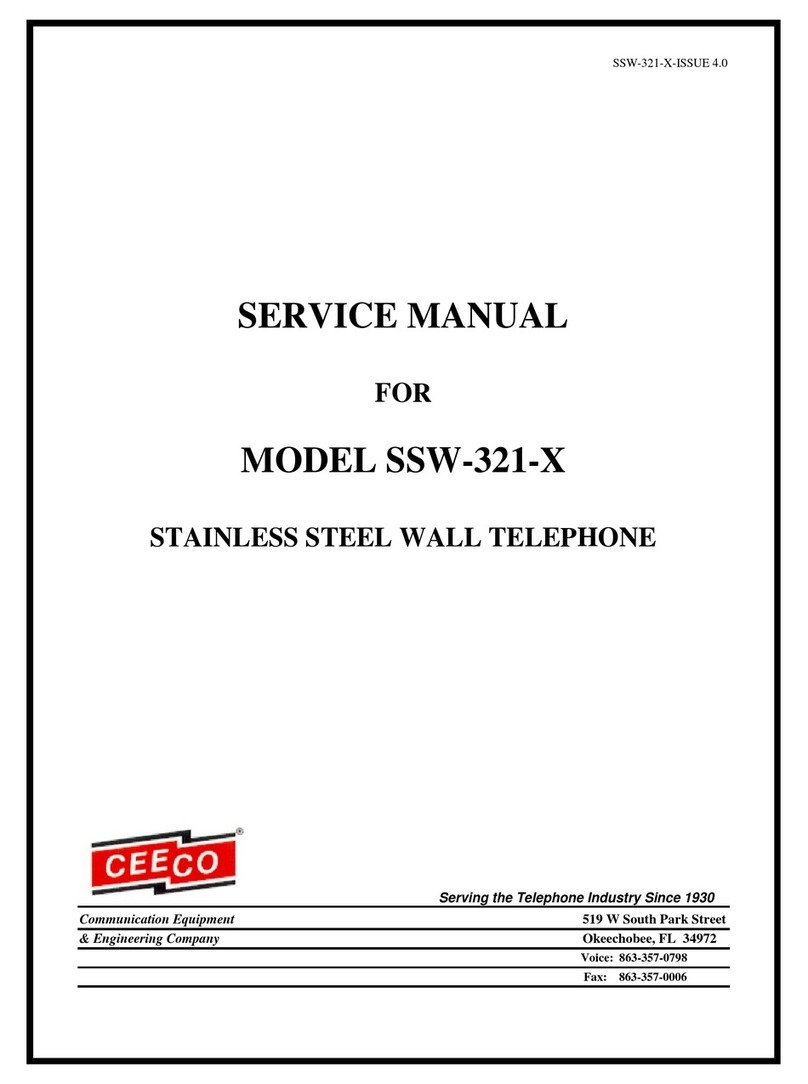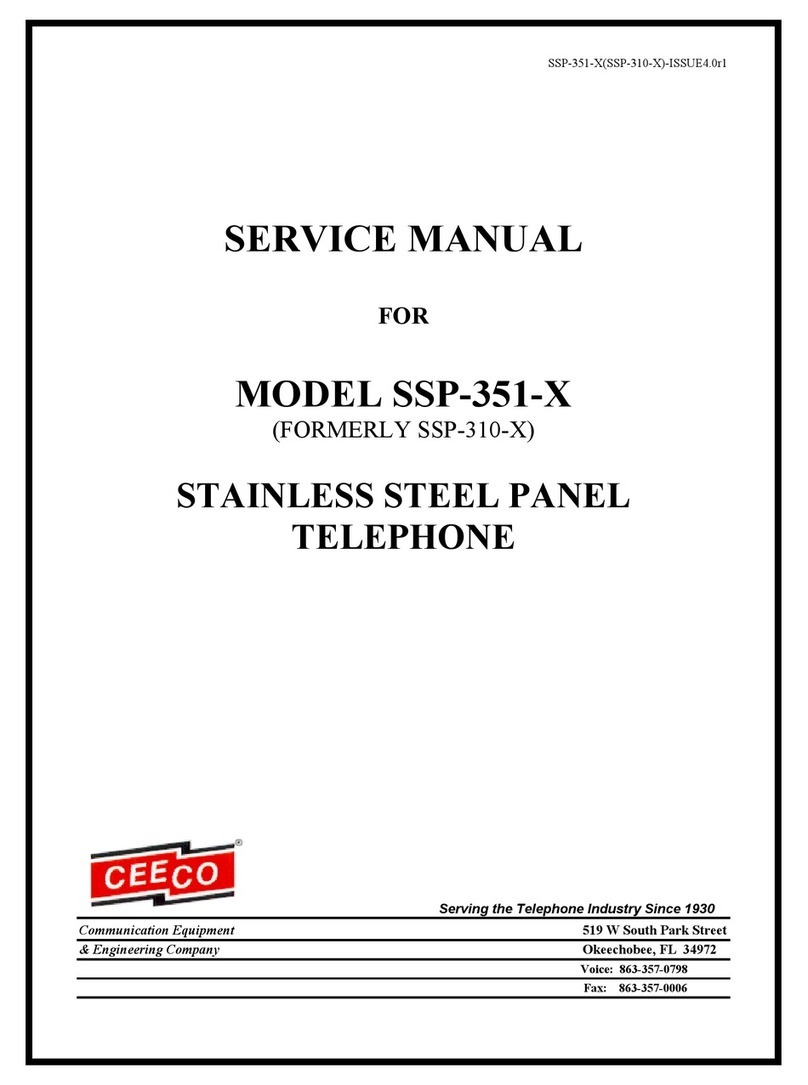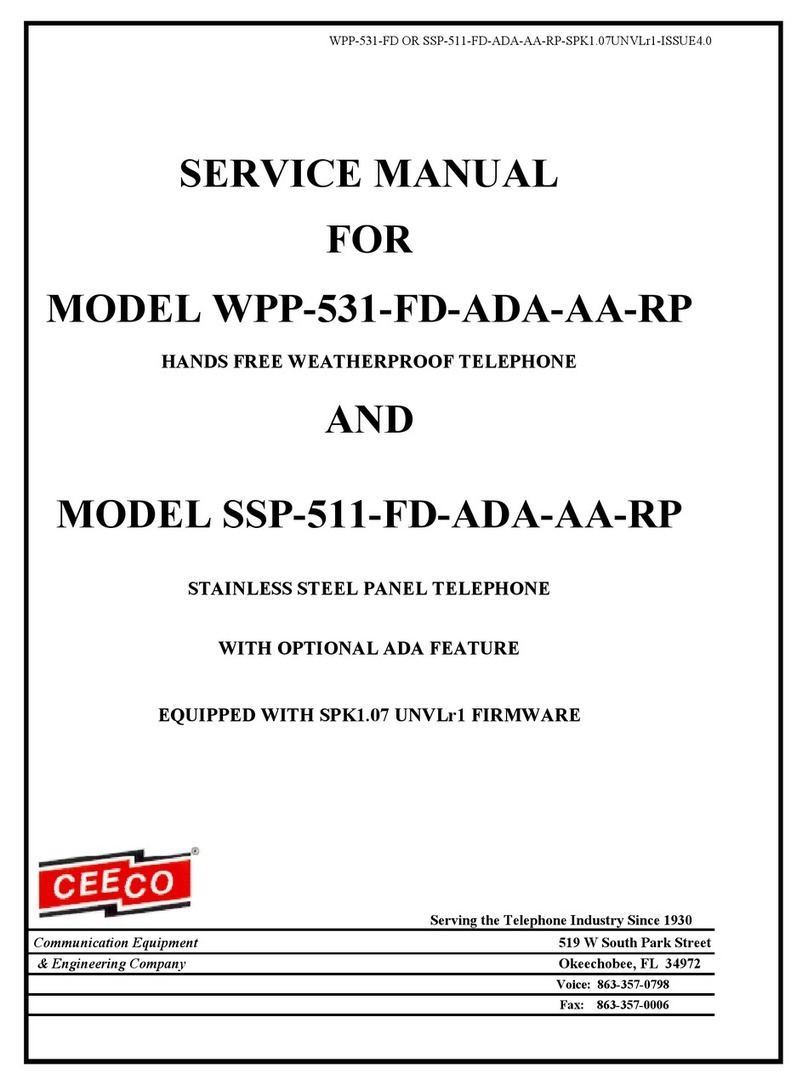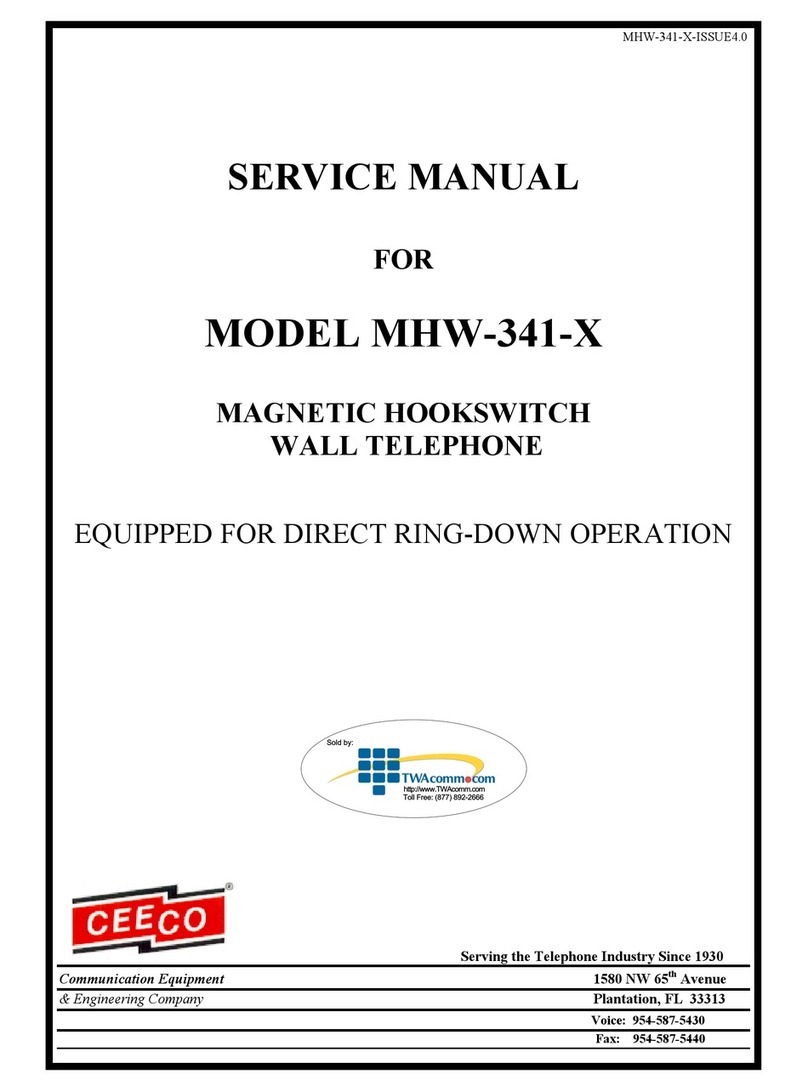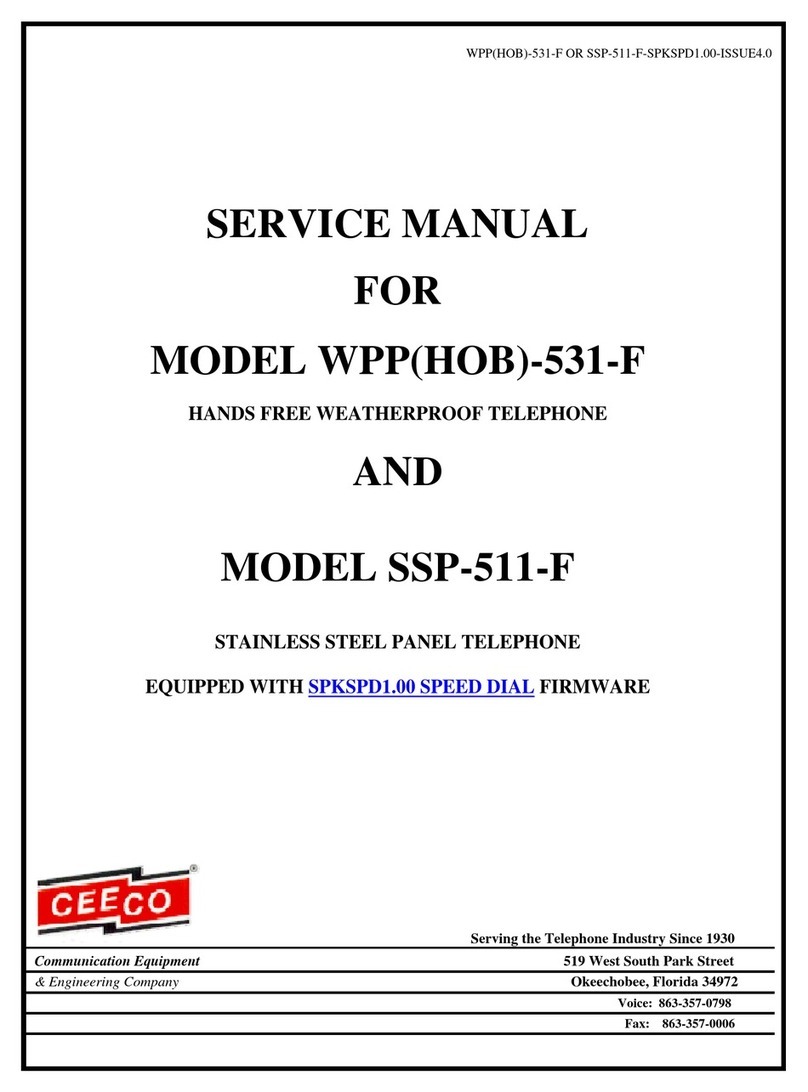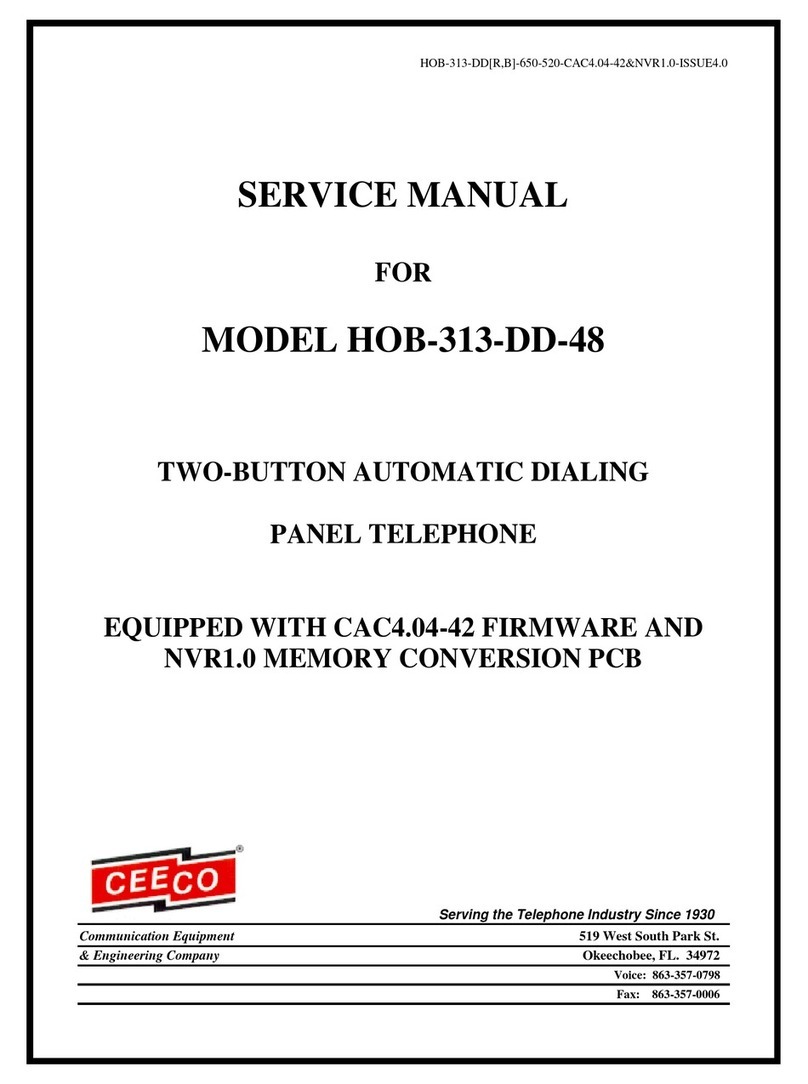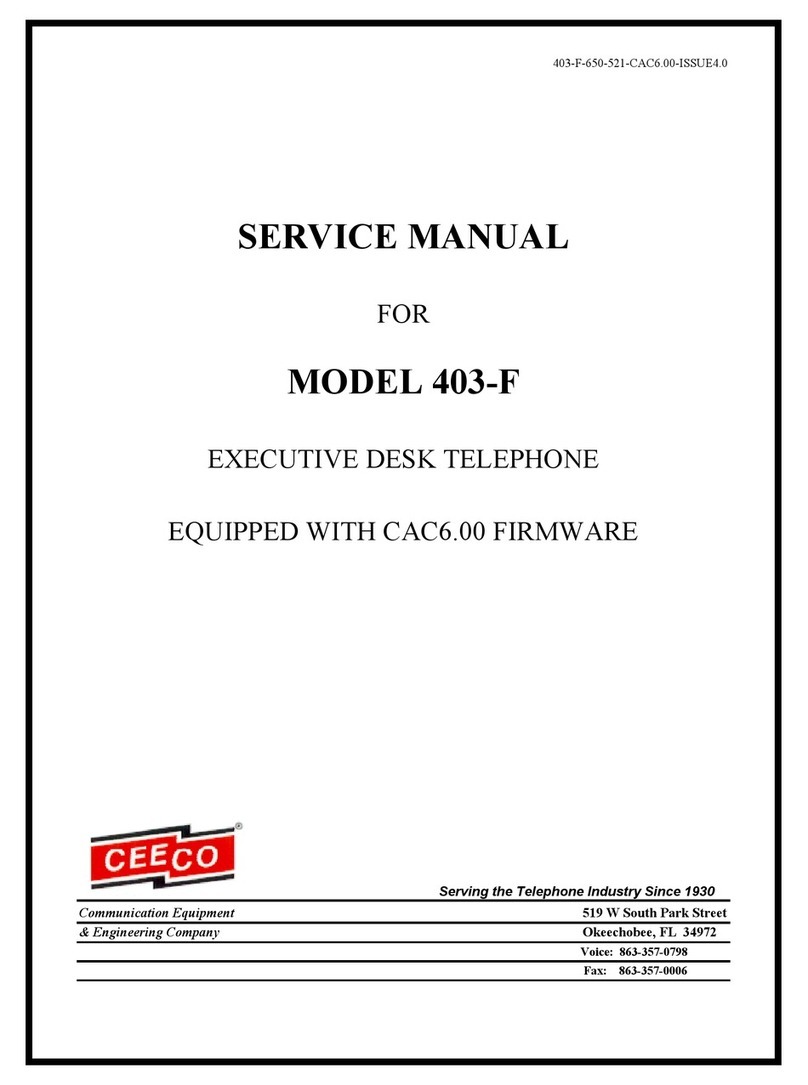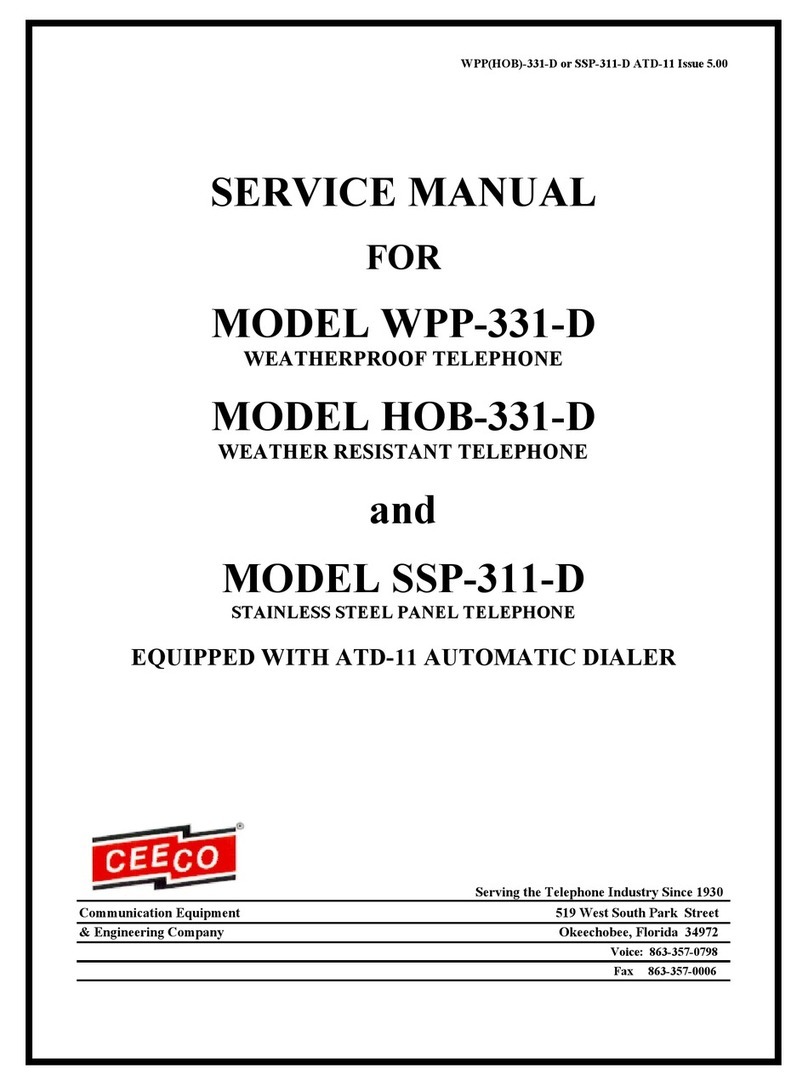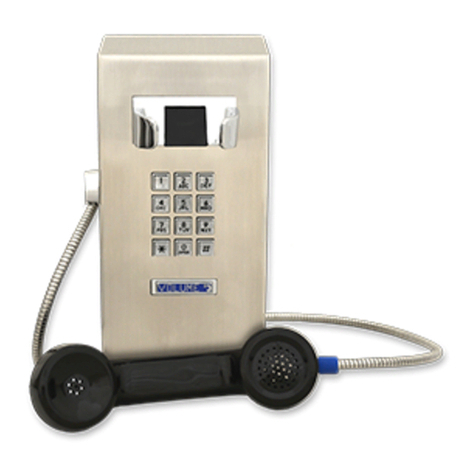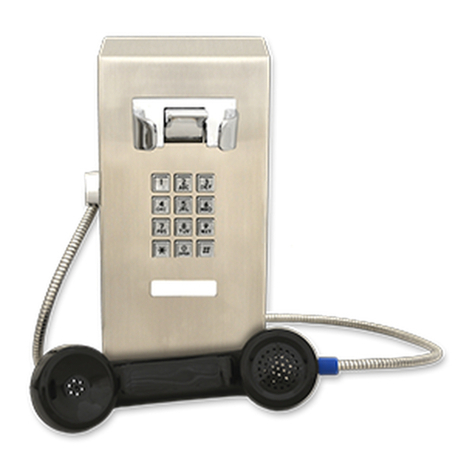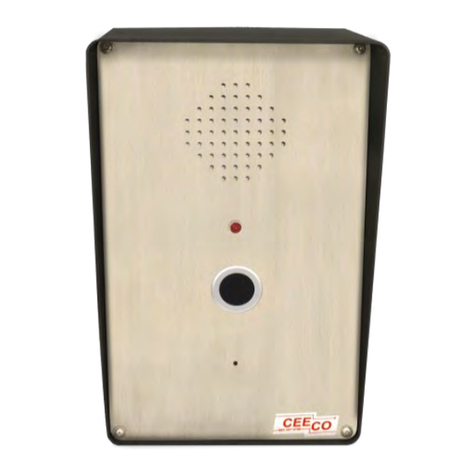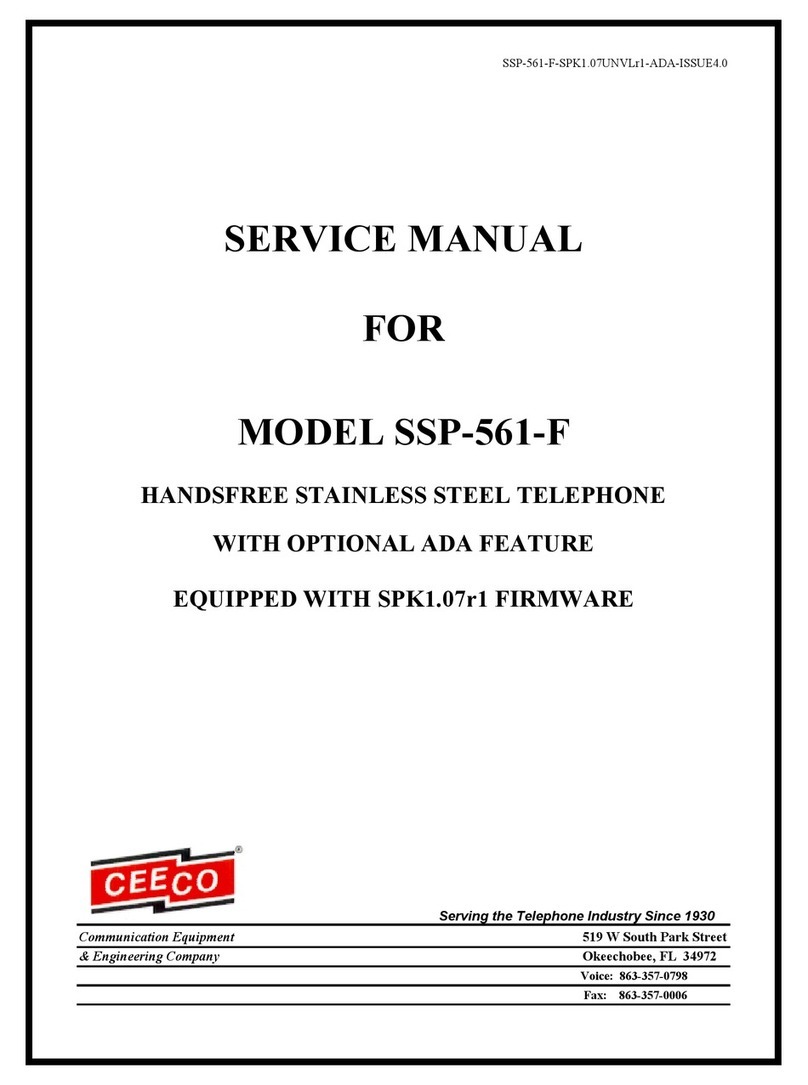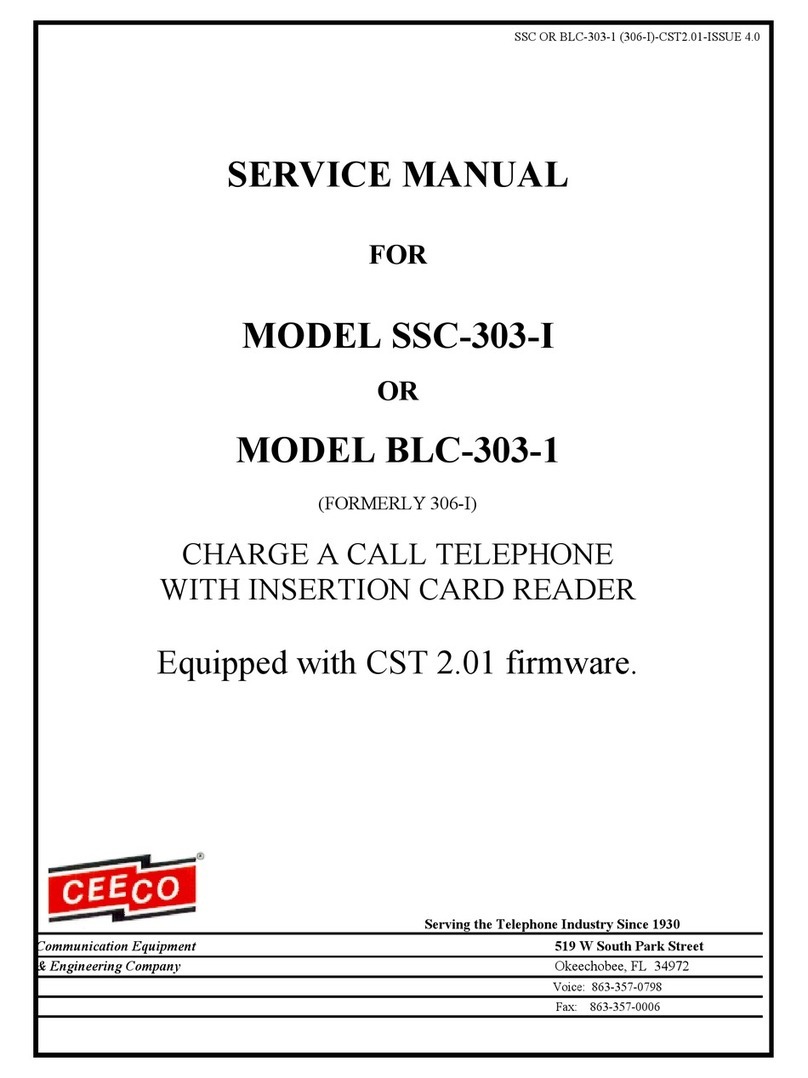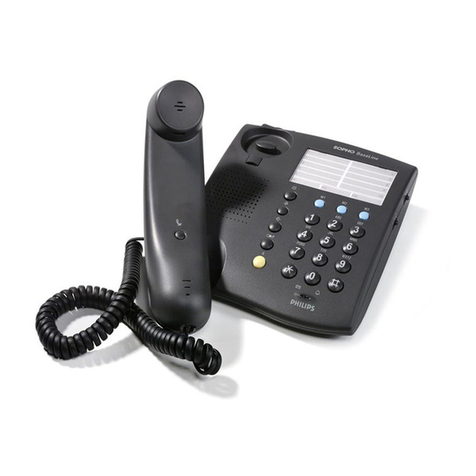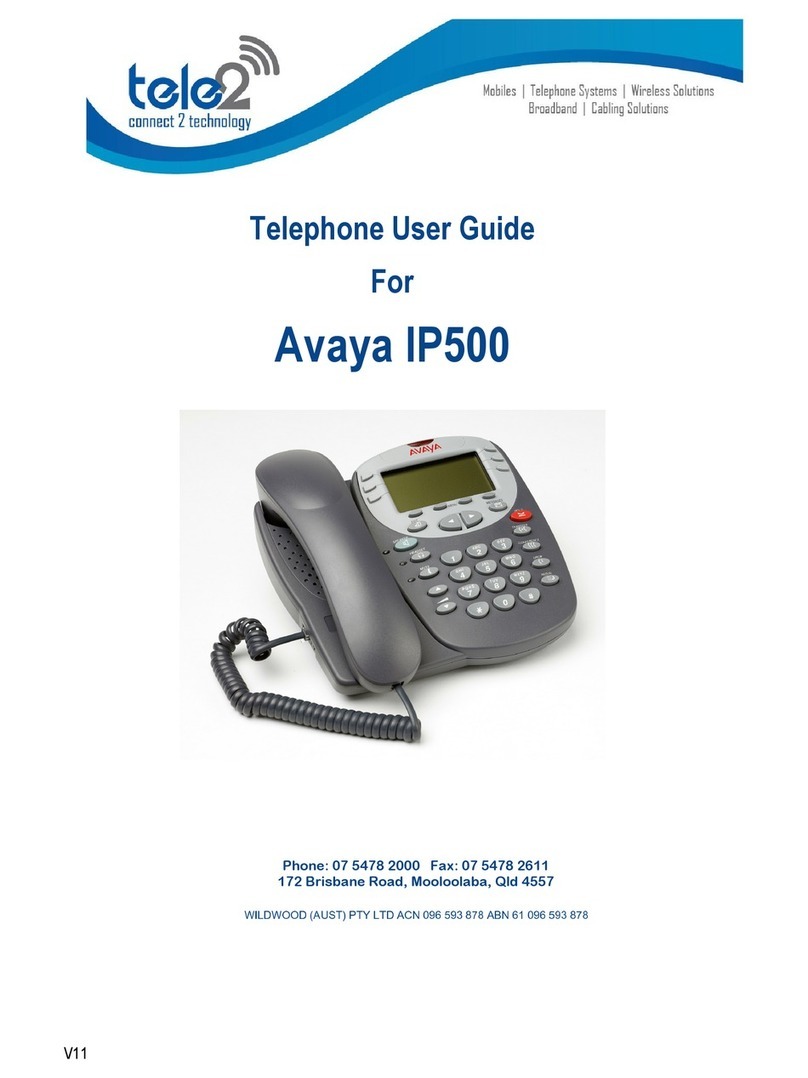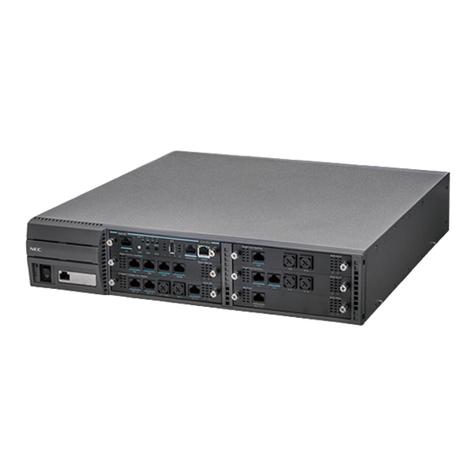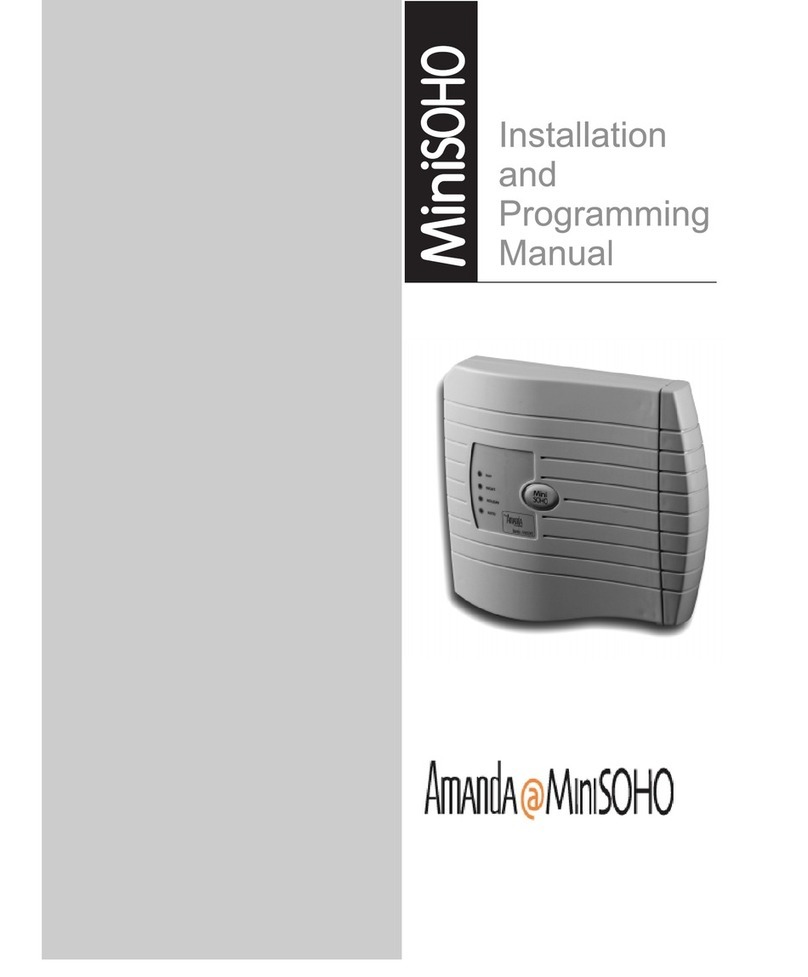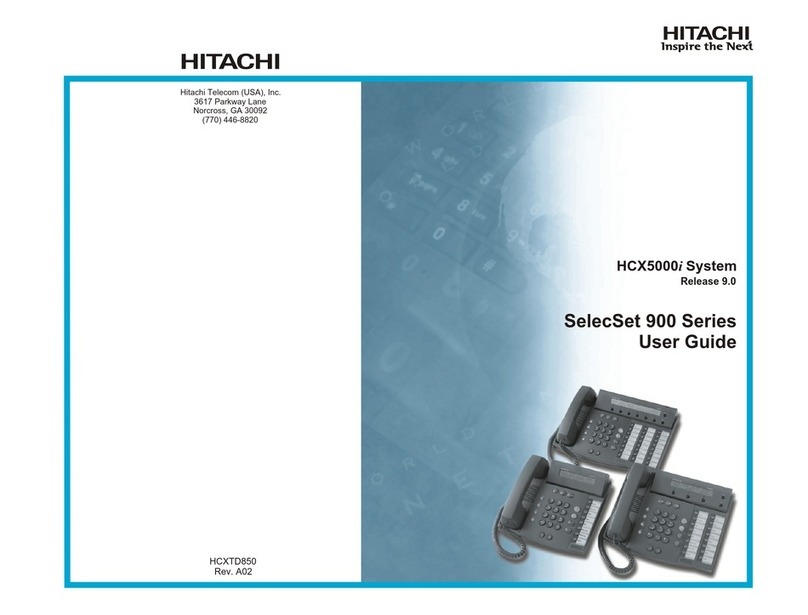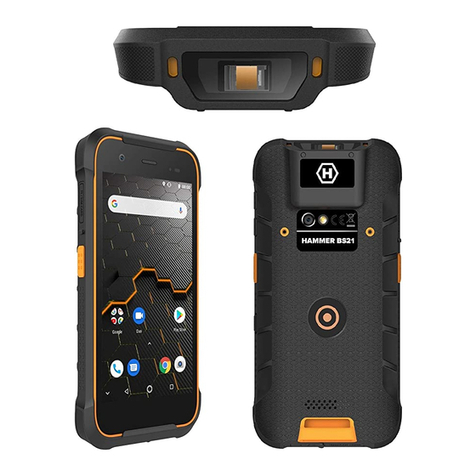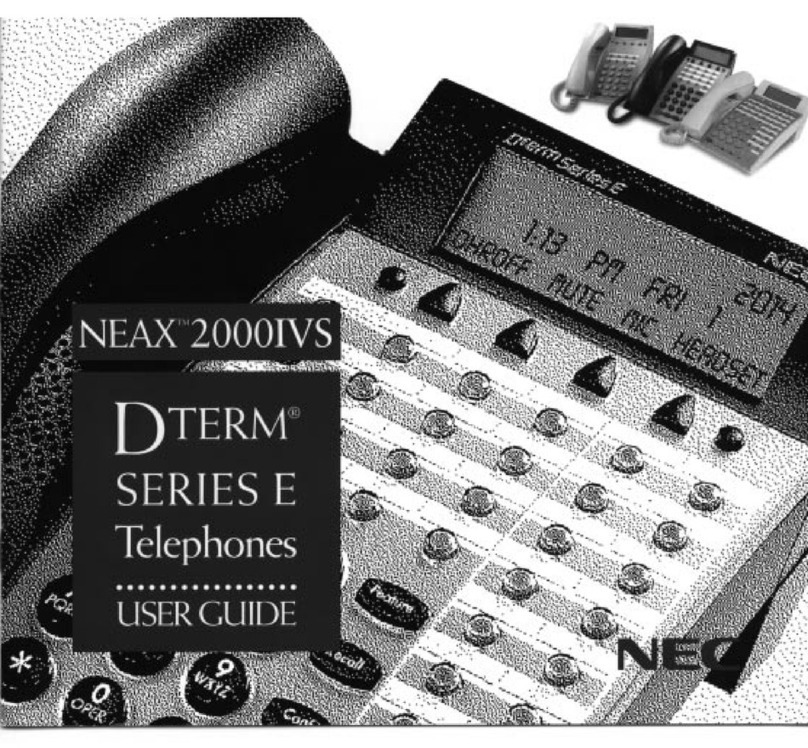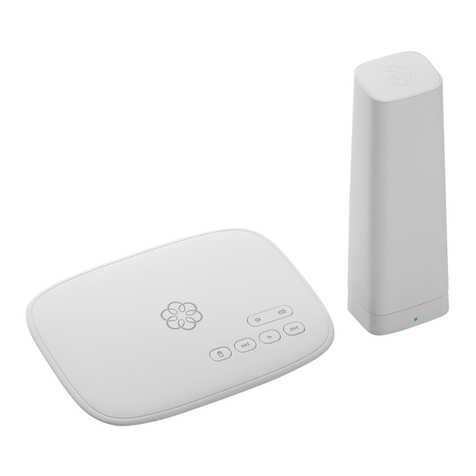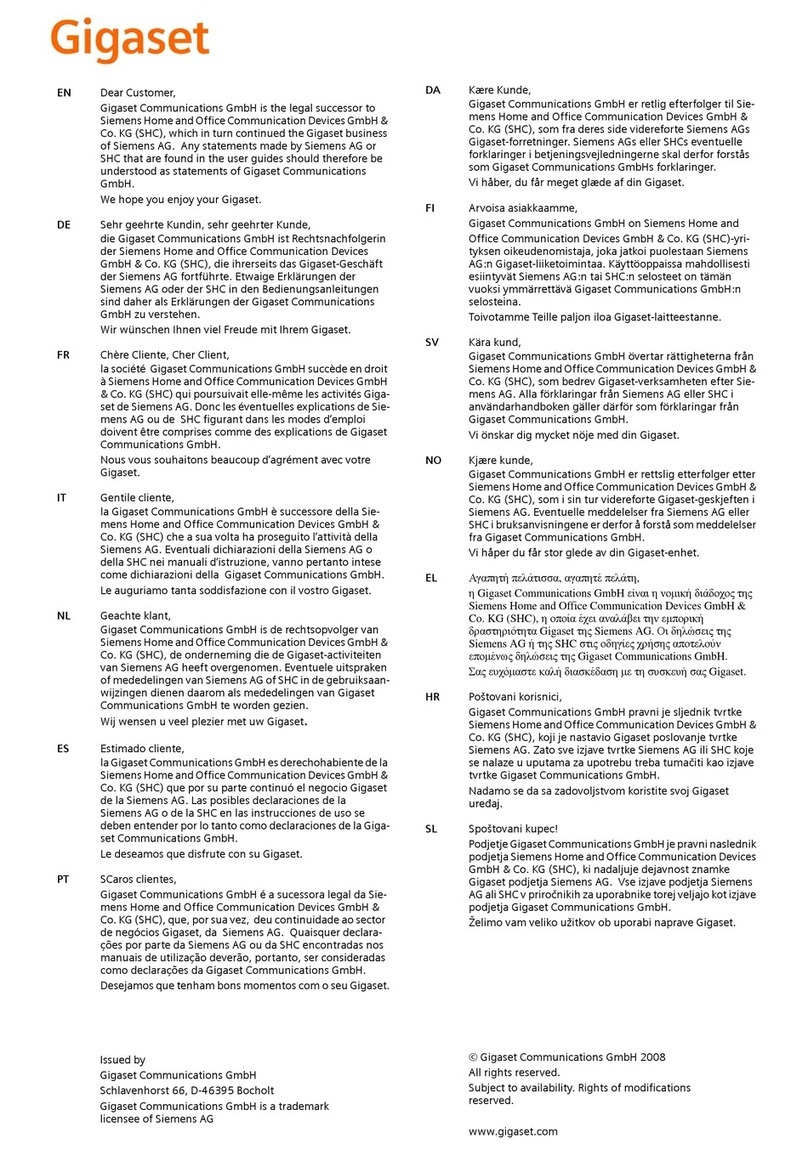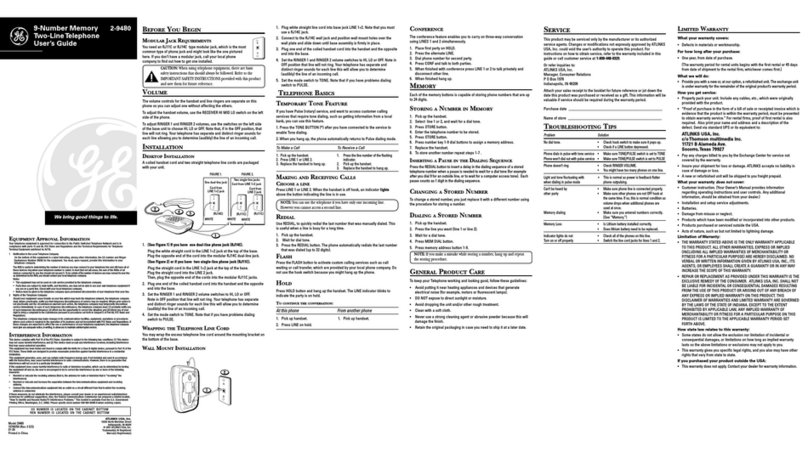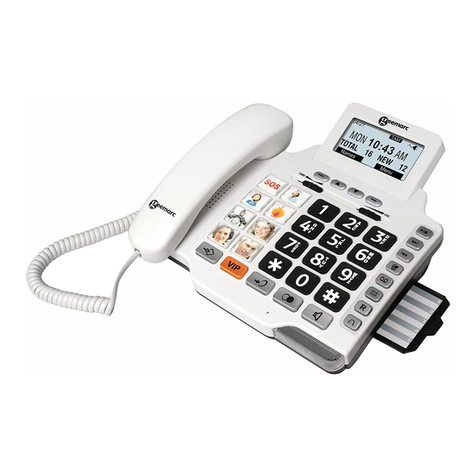
ISSUE 4.0
CEECO
Communication Equipment & Engineering Company
PROPRIETARY
1
PROGRAMMING CONTINUED…
3.7 If it is necessary for the phone to automatically dial a number (up to
eleven digits in length) when the handset is lifted, enter # 1 9 followed by
the desired auto dial number. If this is not a desired function, proceed to
section 3.9.
Example: Entering #199 will program the phone to automatically dial a 9,
when the handset is lifted. Be sure to record your entry in the table below
for future reference.
1st Auto Dial Number Table: #19 __ __ __ __ __ __ __ __ __ __ __
3.8 If it is necessary for the phone to automatically dial a second number
(up to eleven digits in length) after the one stored in location #19 (see
above), Enter # 1 8 followed by the desired auto dial number. If this is not
a desired function, then proceed to section 3.9. In order to use #18, you
must first use #19. This number will dial out approximately one second
after any number stored in the #19 location. For example: Entering
#1818005551212 will program the phone to dial 1-800-555-1212
approximately one second after it dials the number stored in location #19.
Combining the examples from this section and the one above, entering
#199#1818005551212 will program the phone to automatically dial 9,
pause one second and automatically dial 1-800-555-1212, when the
handset is lifted. Be sure to record your entry in the table below for future
reference.
2nd Auto Dial Number Table: #18 __ __ __ __ __ __ __ __ __ __ __
3.9 If it is desired to have speed-dialing capability with the normally
configured keypad, simply enter the pound key, followed by the
location number (#30 thru #69), followed by the desired speed dial
number. If this is not a desired function, proceed to section 3.9. These
speed dial numbers are different from section 3.6, in that they require the
pound key plus two digits to be dialed in order to release them. There are
40 speed-dial locations available (#30 thru #69). The speed numbers
may be up eleven digits in length.
Example: Entering #305551212 will cause the phone to automatically dial
the number 555-1212, when # 3 0 is entered on the normal keypad.
